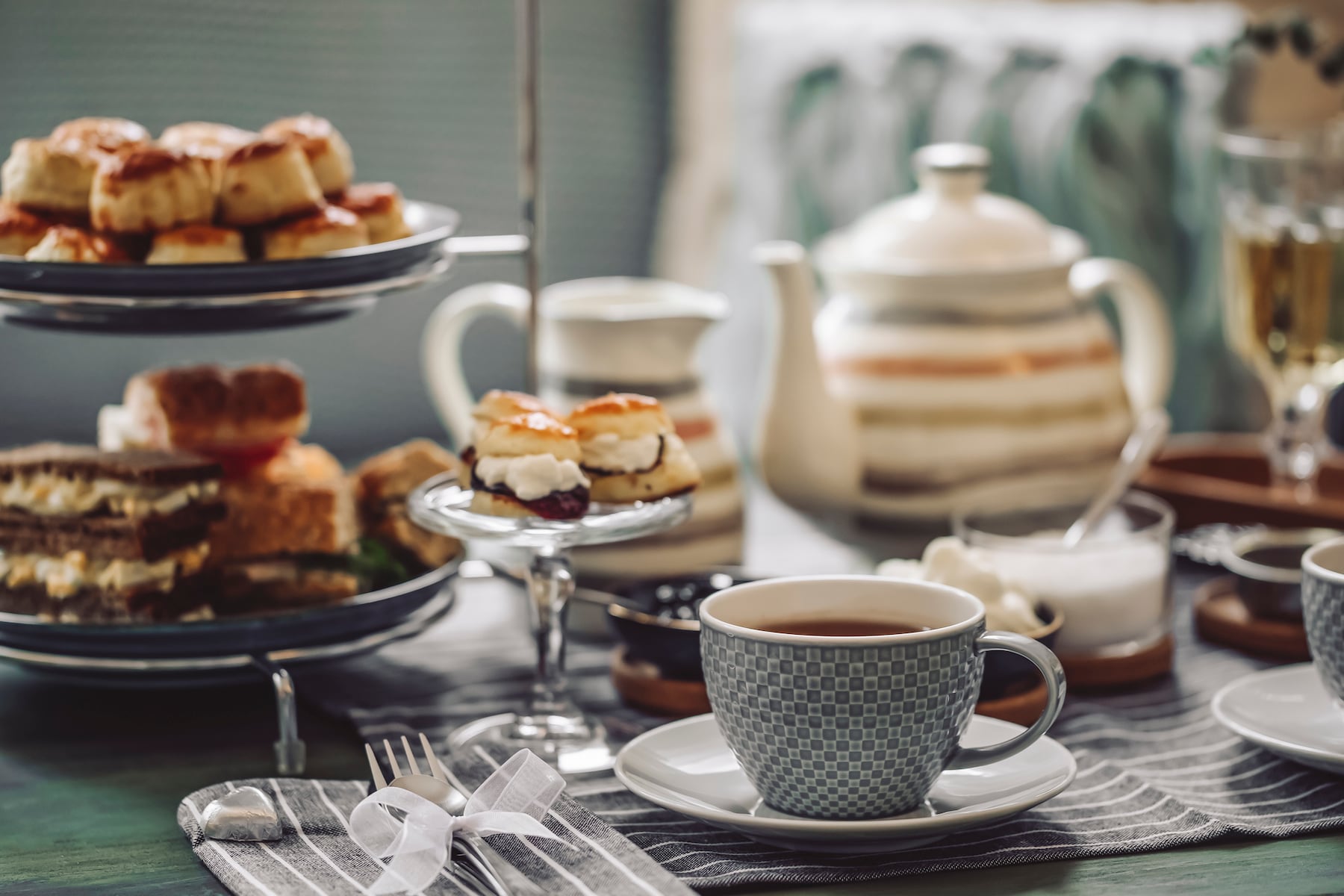Lifestyle
Tea Etiquette: Navigating Scone and Pastry Protocols

A recent inquiry to etiquette expert Miss Manners sparked a lively discussion about the proper way to enjoy a traditional afternoon tea. The question, posed by a reader, examined the nuances of dining etiquette while indulging in scones, finger sandwiches, and miniature pastries at a hotel known for its genteel atmosphere.
In this scenario, the reader and her friends broke their scones with their fingers, spreading cream and jam before taking bites. They followed this with finger sandwiches, but when it came to the pastries, a divide emerged. While her friends meticulously used forks and knives to enjoy their pastries, the reader opted for a more casual approach, using her fingers to lift the treats to her lips. This led her to ponder whether her choice constituted a breach of etiquette.
Miss Manners, whose real name is Judith Martin, provided a lighthearted response to the inquiry. She acknowledged the reader’s methods as “passably” acceptable, while also humorously critiquing the notion of “historical food porn” that accompanied the question. Her response emphasized the importance of enjoying the experience while adhering to traditional practices.
Understanding Tea Etiquette
Afternoon tea is a social event steeped in tradition, often featuring a carefully curated selection of delicacies served in a specific order. Typically beginning with scones accompanied by cream and jam, the meal progresses to finger sandwiches and concludes with an array of pastries. The setting usually demands a level of decorum, often characterized by delicate tableware and an expectation of refined manners.
While the reader’s choice to use her fingers for pastries might seem unconventional, it highlights a broader conversation about evolving dining practices. Traditionally, pastries at afternoon tea are meant to be enjoyed in a dainty manner, and the use of cutlery has been the norm in many formal settings. Yet, as dining customs shift, the lines surrounding etiquette are becoming more blurred.
Miss Manners’ playful take on the question reflects a growing acceptance of personal comfort in social dining situations. “Entertaining, nevertheless,” she noted, suggesting that the focus should remain on enjoyment rather than strict adherence to formality.
The Balance of Tradition and Personal Preference
Dining etiquette, particularly in formal settings, often elicits anxiety about proper conduct. Many individuals feel pressure to conform to established norms, which can lead to discomfort during social gatherings. However, as seen in this instance, the essence of etiquette is about making others feel comfortable while enjoying the occasion.
As society continues to embrace more relaxed dining experiences, the question arises: should rigid rules dictate our enjoyment of food? While maintaining awareness of traditional practices is valuable, the ability to adapt these customs to personal preferences may enhance the overall experience.
In conclusion, the reader’s experience at afternoon tea serves as a reminder of the evolving nature of etiquette. While traditional guidelines hold significance, modern interpretations allow for flexibility and personal expression. As Miss Manners suggests, the joy of sharing food with friends, regardless of how it is consumed, remains paramount.
For future inquiries, readers can reach out to Miss Manners through her website, via email, or by postal mail to Andrews McMeel Syndication in Kansas City, MO.
-

 Lifestyle4 months ago
Lifestyle4 months agoLibraries Challenge Rising E-Book Costs Amid Growing Demand
-

 Sports4 months ago
Sports4 months agoTyreek Hill Responds to Tua Tagovailoa’s Comments on Team Dynamics
-

 Sports4 months ago
Sports4 months agoLiverpool Secures Agreement to Sign Young Striker Will Wright
-

 Lifestyle4 months ago
Lifestyle4 months agoSave Your Split Tomatoes: Expert Tips for Gardeners
-

 Lifestyle4 months ago
Lifestyle4 months agoPrincess Beatrice’s Daughter Athena Joins Siblings at London Parade
-

 World4 months ago
World4 months agoWinter Storms Lash New South Wales with Snow, Flood Risks
-

 Science4 months ago
Science4 months agoTrump Administration Moves to Repeal Key Climate Regulation
-

 Science3 months ago
Science3 months agoSan Francisco Hosts Unique Contest to Identify “Performative Males”
-

 Business4 months ago
Business4 months agoSoFi Technologies Shares Slip 2% Following Insider Stock Sale
-

 Science4 months ago
Science4 months agoNew Tool Reveals Link Between Horse Coat Condition and Parasites
-

 Sports4 months ago
Sports4 months agoElon Musk Sculpture Travels From Utah to Yosemite National Park
-

 Science4 months ago
Science4 months agoNew Study Confirms Humans Transported Stonehenge Bluestones









